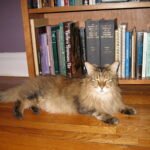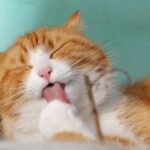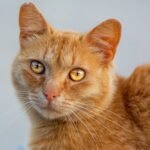It’s easy to forget, as we rush through our noisy lives, that there are creatures living quietly and nearly unseen. Clouded leopards are some of the world’s most mysterious cats, slipping through dense jungles like ghosts. In the stillness of their sanctuary, these rare felines reveal moments of beauty, vulnerability, and quiet strength. Each photograph, each breath, feels like a secret being shared. This is a corner of the world where every whisker matters, and every pawprint tells a story that most of us will never witness outside these safe shadows. Let’s step softly into their world—let’s learn, wonder, and look a little closer at the lives unfolding under the clouded canopy.
The Dappled Ghosts of the Forest

Clouded leopards seem to melt into the jungle, their coats patterned like sunlight filtering through leaves. This camouflage isn’t just beautiful; it’s essential. It lets them vanish from both prey and predators, moving in silence where other animals blunder. To spot one in the wild is almost a miracle—they’re called “ghost cats” for a reason. The sanctuary’s photos capture their delicate stealth, the way light flickers over their bodies as if the forest itself is painting them. It’s humbling, really, to realize how little we truly see of their world. Their elusive nature reminds us there’s still wildness left on this planet—if only we care to look.
Eyes That Hold Secrets
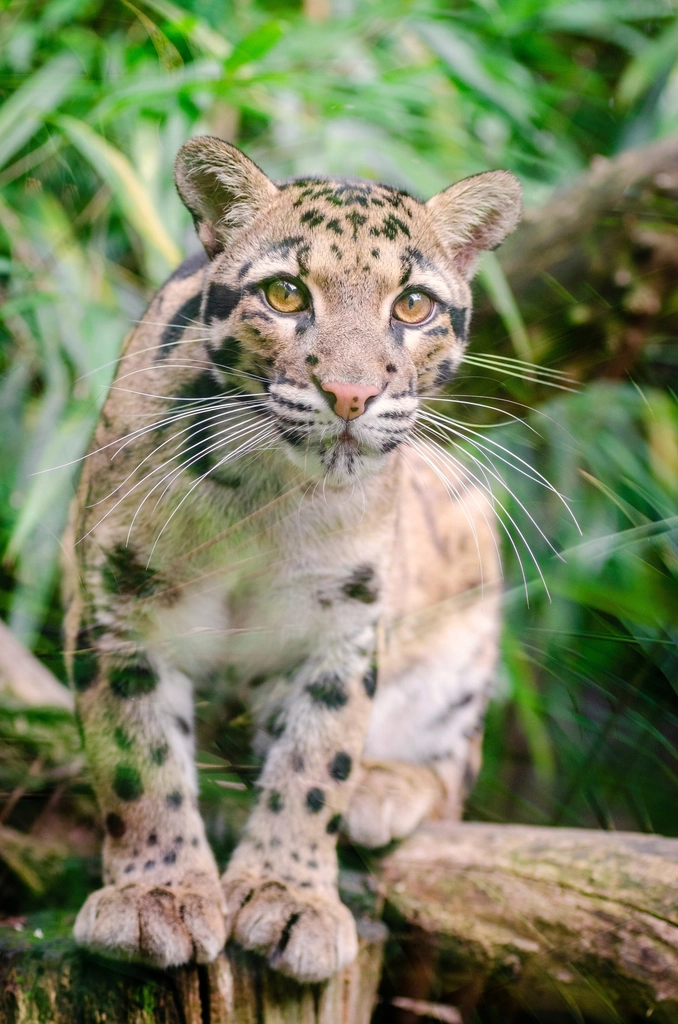
When a clouded leopard fixes its gaze on you, it’s like being seen by something ancient and knowing. Their eyes are wide and luminous, reflecting the deep greens and golds of the forest. There’s a softness there, but also a wariness—a sense that these cats carry the memory of being both hunter and hunted. In the sanctuary, caretakers say eye contact is rare and fleeting. But when it happens, it feels like a privilege, a tiny bridge between two worlds. You can’t help but wonder what these cats have seen, and what secrets they’re keeping tucked behind that steady, flickering stare.
Silent Hunters at Dawn

At first light, the sanctuary is filled with shadows and the hush of dew-soaked leaves. Clouded leopards are at their most active now, gliding along branches and slipping between tree trunks. Their hunting isn’t about speed; it’s about patience and quiet precision. They stalk birds, monkeys, and even small deer, relying on their ability to disappear until the last possible moment. Watching them move, you see a kind of poetry—muscles rippling, tails balancing, every step deliberate. There’s a lesson here about the value of patience and the power of moving quietly in a noisy world.
Tails Like Balancing Ropes

One of the first things you notice about a clouded leopard is its impossibly long tail. It’s almost as long as the rest of the cat! This tail isn’t just for show—it’s a balancing act, helping the leopard walk along branches that would make most of us dizzy just looking at them. In the sanctuary, you sometimes spot them draped lazily across a limb, their tails curled like question marks. Their agility is breathtaking, reminding us how perfectly nature equips its creatures. There’s something playful and wondrous about a tail that seems to have a mind of its own, flicking through shadows and sunlight alike.
Paws Built for Climbing

If you ever see the underside of a clouded leopard’s paw, you’ll notice something odd—those paws are big, padded, and almost hand-like. These cats are born climbers, with flexible ankles that let them go up, down, and even hang upside down from branches. In the sanctuary, staff sometimes find leopards napping in the highest, leafiest spots, safe from any disturbance. Their claws are sharp and retractable, leaving only faint marks on the bark. Watching them climb is like watching someone perform a high-wire act—graceful, daring, and just a little bit magical.
Clouded Coats and Shifting Shadows
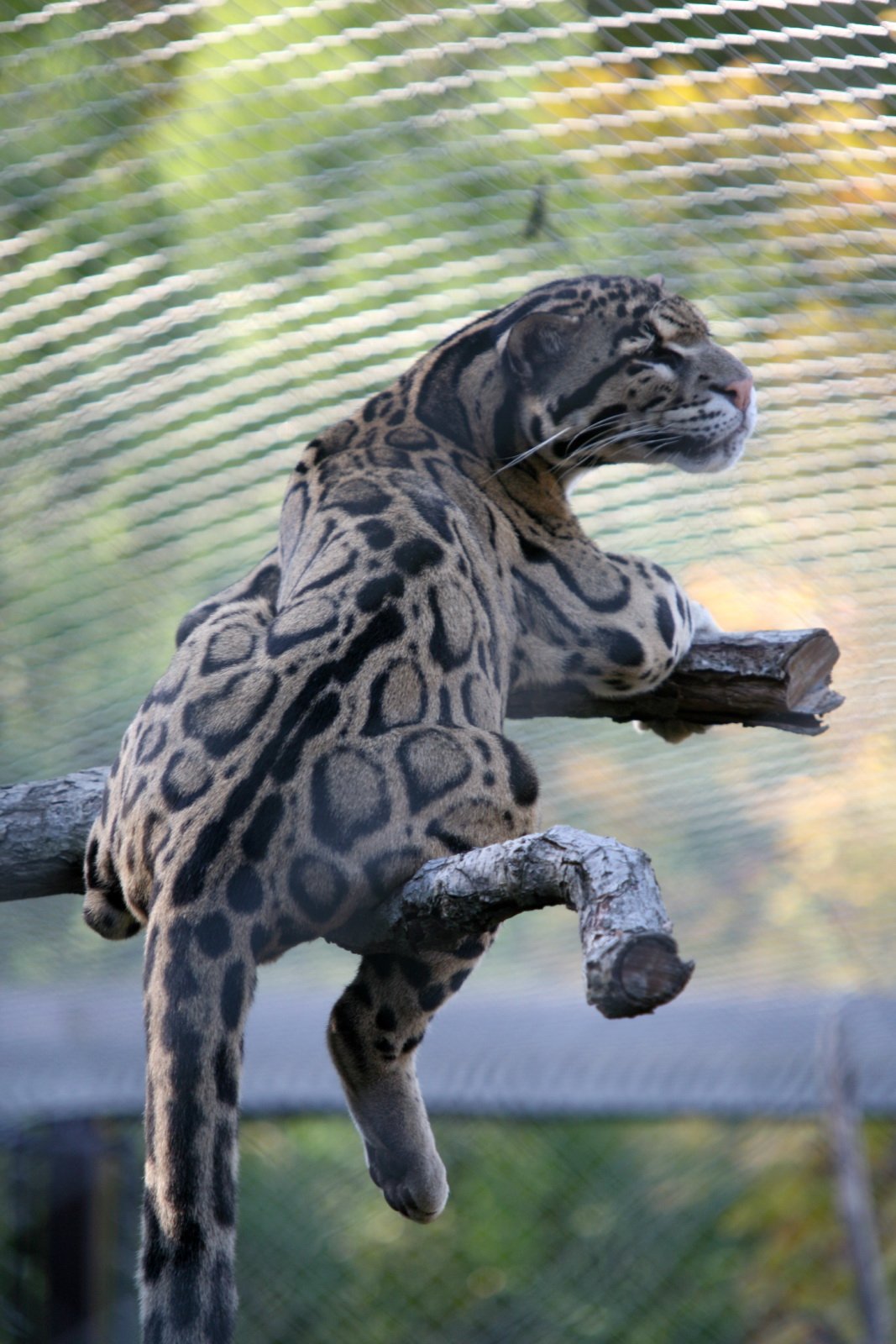
The patterns on a clouded leopard’s fur are unlike any other big cat’s. Large, cloud-shaped blotches—hence their name—run along their backs and sides, bordered by dark lines and spots. No two leopards are marked exactly the same, making each one as unique as a fingerprint. In the flickering light of the sanctuary, their coats ripple and change, blending perfectly with the dappled forest floor. There’s an artistry to their appearance that makes you look twice, then a third time, just to take it all in. It’s a reminder that nature is the world’s greatest painter.
Solitude in the Canopy
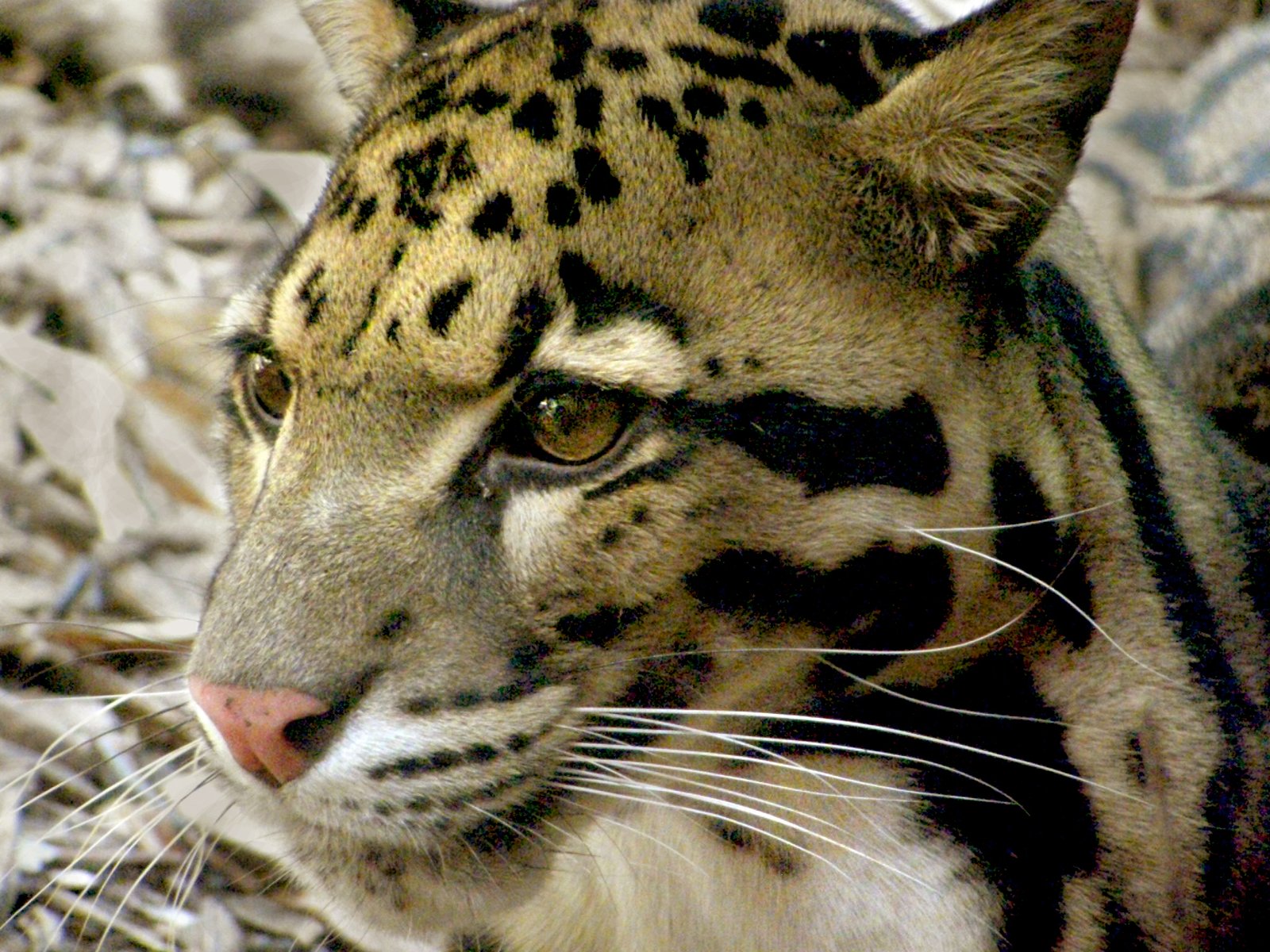
Clouded leopards are true loners. Unlike lions or cheetahs, they don’t hunt in groups or share their kills. In the sanctuary, each cat has its own space, carefully mapped out to mimic the wild territories they’d defend in nature. There’s a kind of peacefulness in their solitude—a quiet confidence, as if they know who they are without needing an audience. Sometimes you’ll catch a glimpse of one watching the world go by, content in its own company. It’s a gentle reminder that being alone isn’t always lonely; sometimes, it’s just the way you’re meant to be.
Whiskers That Sense the World
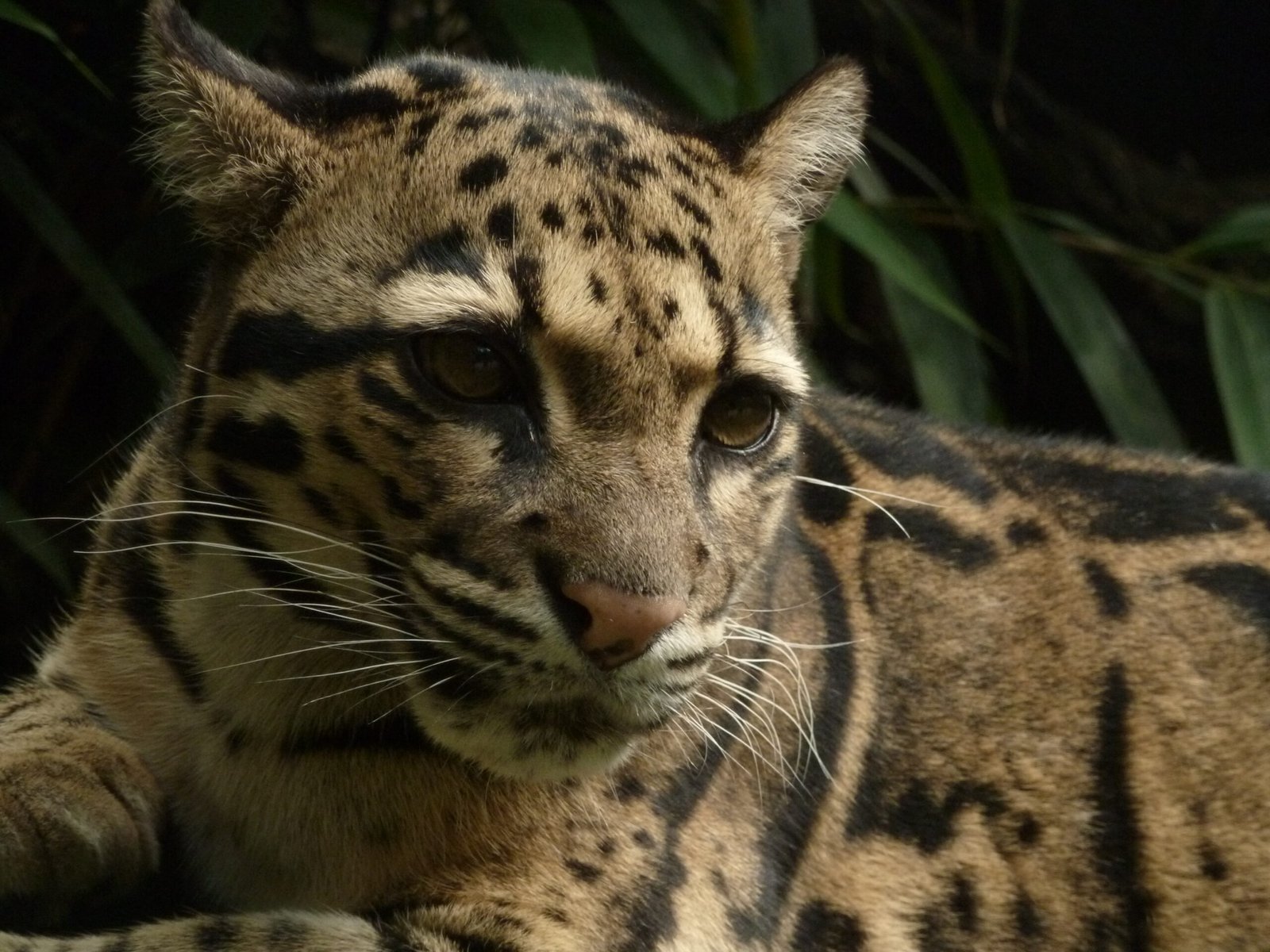
Whiskers aren’t just cute—they’re vital tools for a clouded leopard. Each whisker is a finely tuned sensor, helping the cat measure gaps, sense vibrations, and move through the thickest underbrush without a sound. In the sanctuary, you’ll see their whiskers twitching, picking up the faintest breeze or the rustle of a leaf. It’s almost as if they’re reading the air, writing invisible stories with every step. These tiny hairs are like a sixth sense, making sure the cat is always one step ahead—agile, aware, and perfectly in tune with its home.
Night Comes Alive
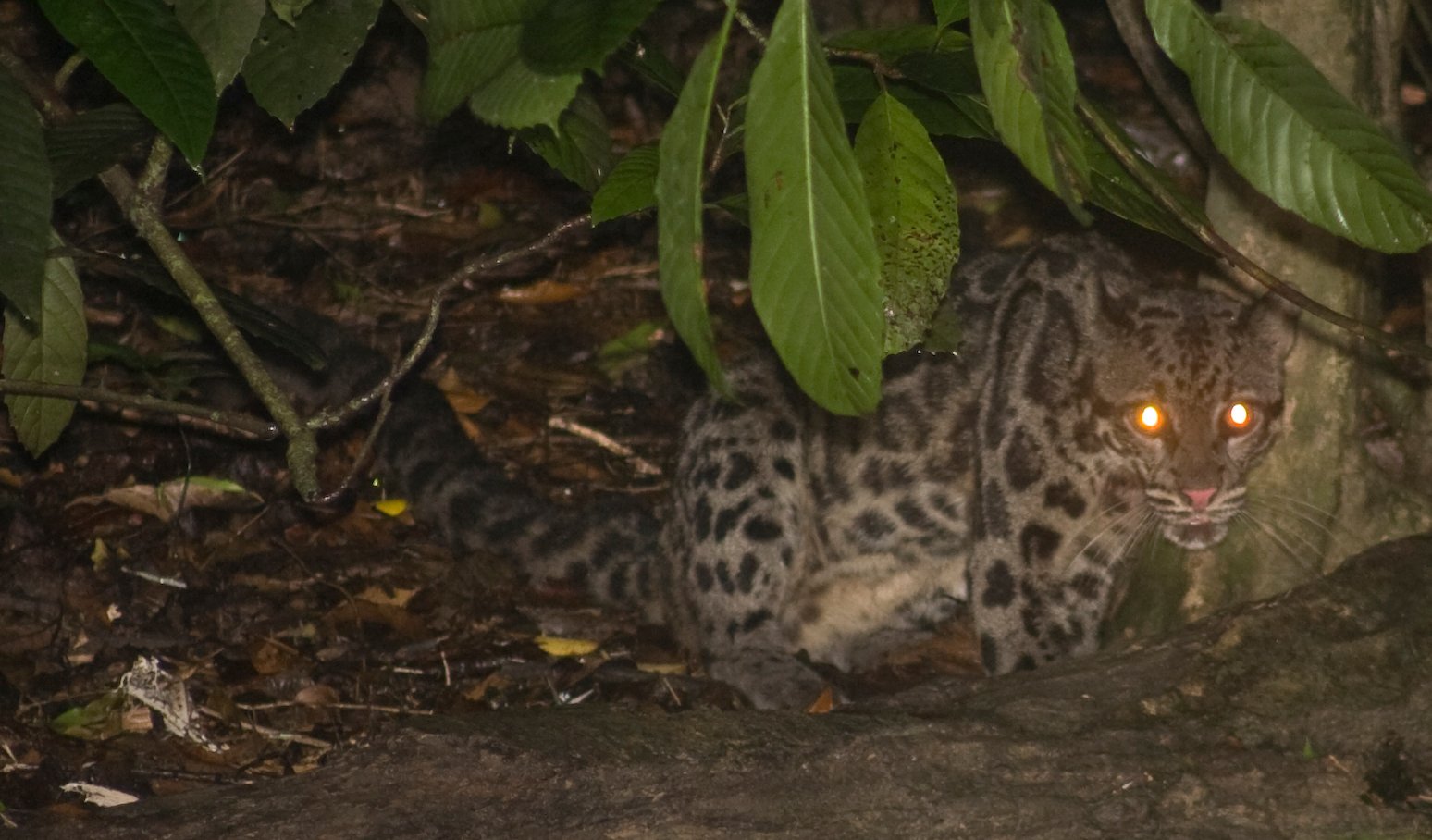
When the sun goes down, the real magic begins. Clouded leopards are crepuscular, meaning they’re most active at dusk and dawn, but they often hunt at night as well. In the sanctuary, the darkness fills with soft footfalls, glowing eyes, and the thrill of the unknown. Nighttime is when these cats truly come alive—leaping, hunting, exploring their world while the rest of us sleep. There’s something deeply moving about knowing that, while we dream, these shy creatures are living out their own wild stories under the stars, hidden from view but never from wonder.
Motherhood in the Shadows
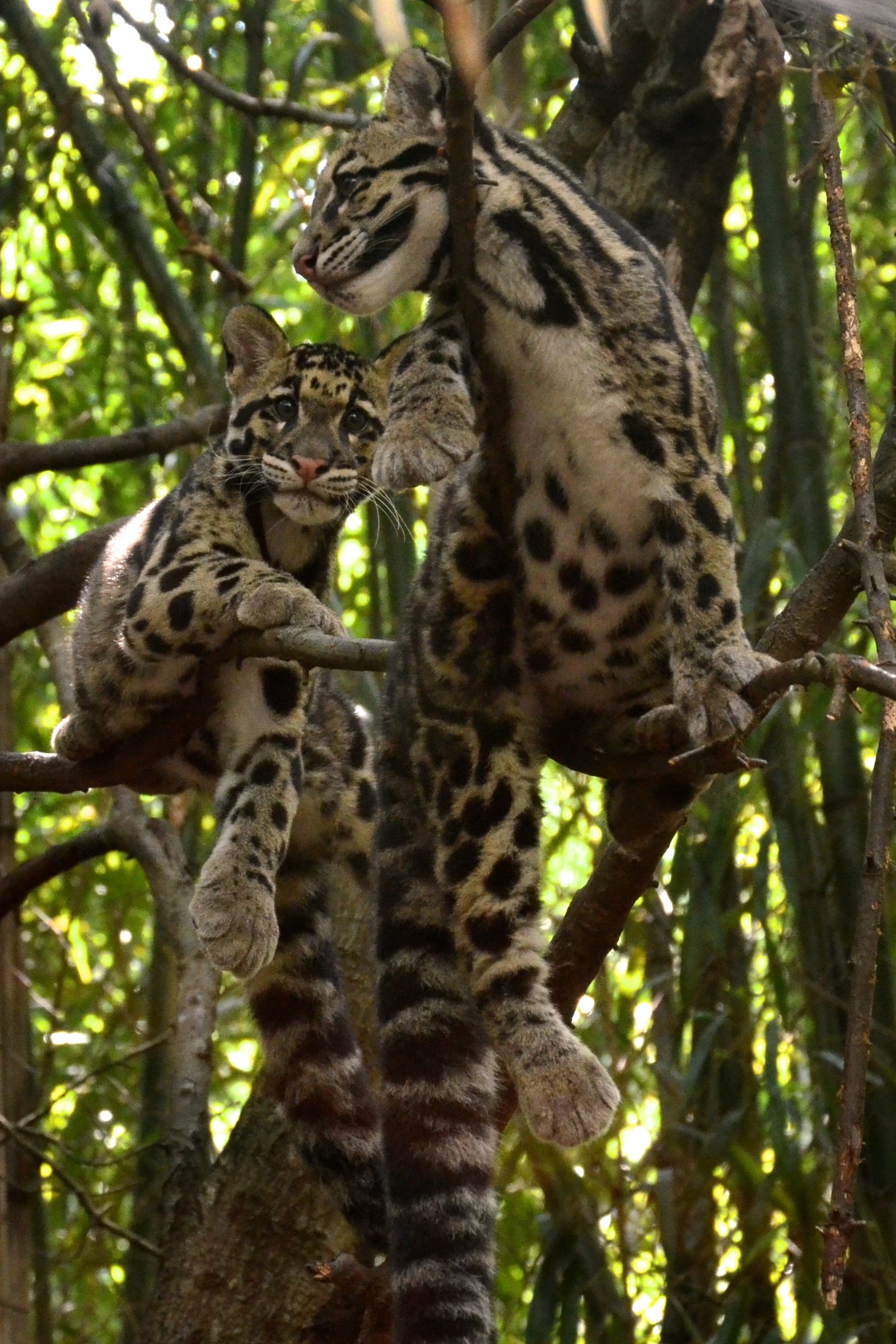
Raising cubs in the wild is a lesson in patience and bravery. Mother clouded leopards are fiercely protective, keeping their young hidden away in tree hollows or dense thickets. In the sanctuary, watching a mother groom her cub or teach it to climb is a privilege. Their bond is quiet but powerful—a language of gentle nudges, playful swats, and shared naps in the sun. These moments remind us that even the wildest hearts are capable of tenderness, and that every generation depends on the care and wisdom of those who came before.
Vocalizations: The Whispered Roar

Unlike lions’ mighty roars, clouded leopards speak in soft chuffing, mews, and low growls. Their voices are gentle, almost secretive, fitting for such elusive animals. In the sanctuary, you might hear a quiet purr or a chattering sound as two leopards greet each other from a distance. Each call serves a purpose—warning, greeting, or simply expressing contentment. These subtle sounds remind us that communication isn’t always loud or obvious. Sometimes, it’s the softest voices that carry the most meaning, echoing through the stillness of the forest.
The Art of the Ambush

Clouded leopards are patient ambush hunters, waiting for the perfect moment to strike. They use every part of their body—their silent paws, their flexible spines, their keen eyes—to blend in and outwit their prey. In the sanctuary, staff often marvel at how still these cats can be, holding their breath until the time is right. It’s a lesson in restraint and timing, a reminder that sometimes the best action is to wait, watching and listening until opportunity appears. Their hunting style is nature’s version of slow art: deliberate, precise, and breathtakingly effective.
Rain and Riverbank Refuge

Clouded leopards are at home in the rain-soaked forests of Southeast Asia. They thrive where rivers cut through jungle, and monsoons keep everything lush and green. In their sanctuary, you can see how the cats love the sound of rain on leaves, padding along muddy banks with barely a trace. Their world is shaped by water—sometimes a gentle mist, sometimes a roaring downpour. It’s a reminder of how closely tied their lives are to the health of these wild places, and how much these habitats need protection if the leopards are to survive.
The Threat of Disappearing Forests
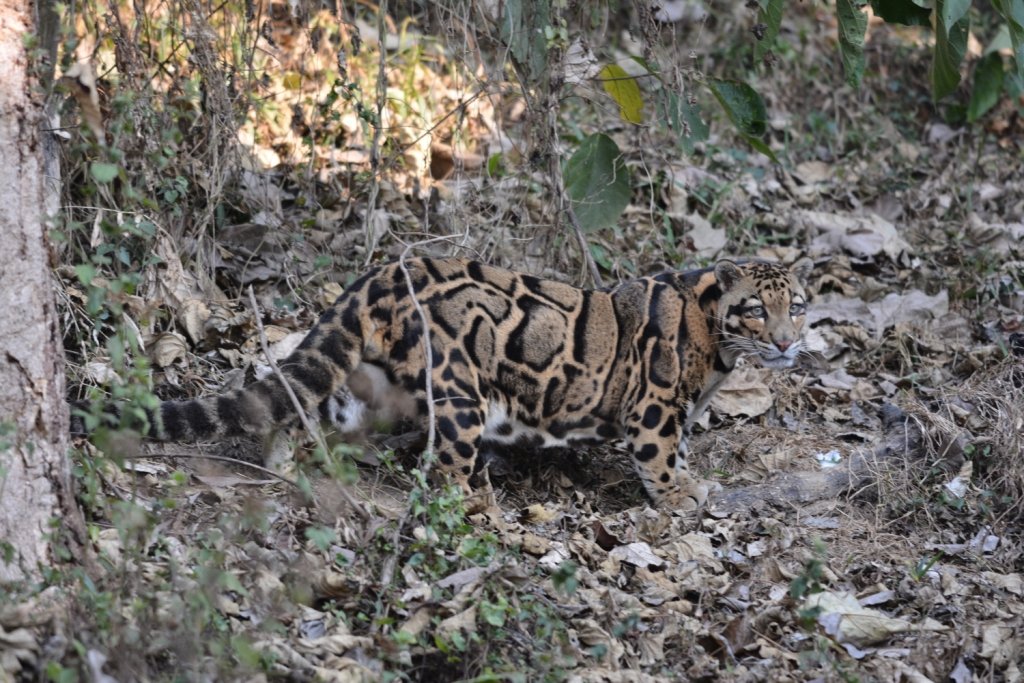
Sadly, clouded leopards face a future as uncertain as the shadows they inhabit. Logging, agriculture, and human expansion are eating away at their jungle homes. In the sanctuary, every cat is a survivor, each one a quiet protest against extinction. Caring for them is an act of hope—a belief that wildness still matters. Their presence is a daily reminder that we’re all connected, and that the choices we make ripple out in ways we might never see. It’s sobering, but also inspiring. The fight to protect them is far from over.
Sanctuary as Safe Haven
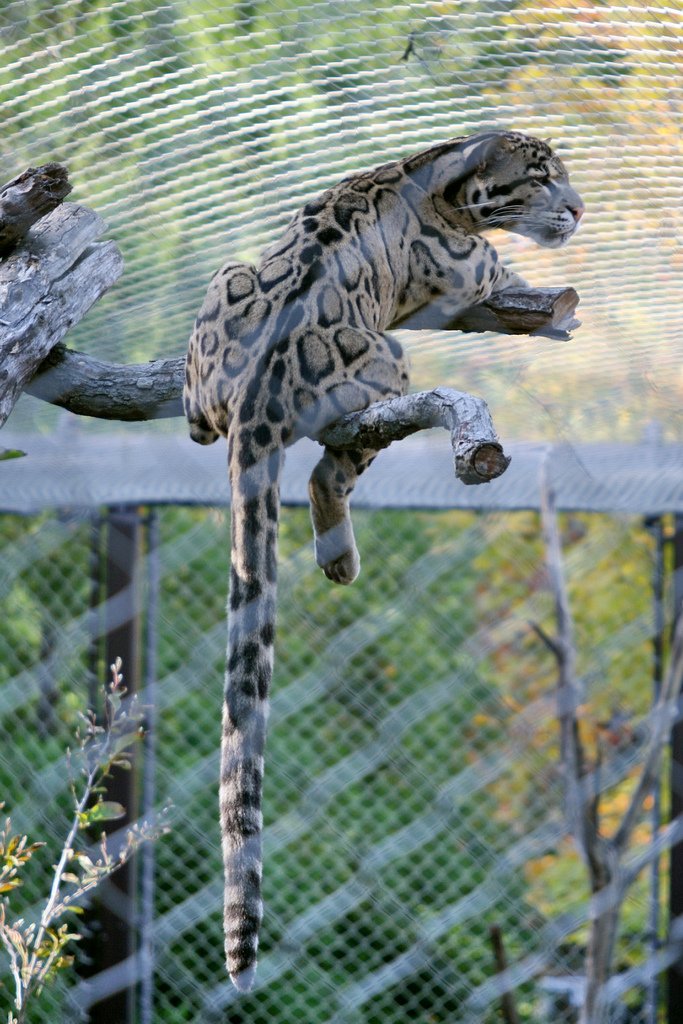
Inside the sanctuary’s boundaries, clouded leopards can finally let their guard down. Here, they’re safe from poachers and the encroaching world beyond the fence. Every enclosure is designed to mimic the wild—dense foliage, tall trees, and places to hide. The staff move quietly, offering food and care but respecting each cat’s need for space and solitude. There’s a sense of peace here, a feeling that, for once, these cats can just be themselves. Sanctuaries like this offer a glimpse of what’s possible when people choose to protect rather than exploit.
Playfulness Among the Leaves
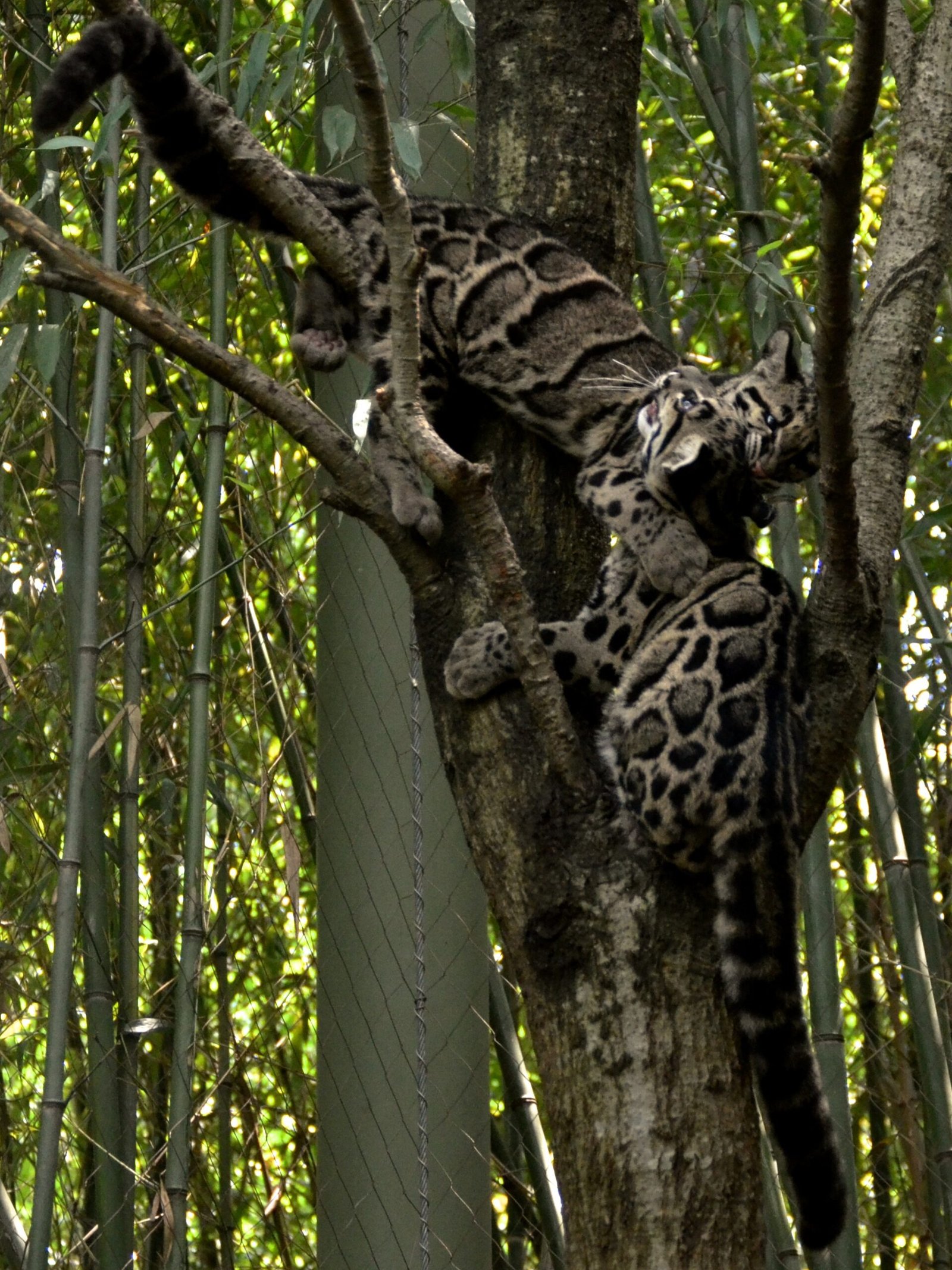
Even the most serious hunters need time to play. In the sanctuary, you’ll sometimes see a clouded leopard batting at falling leaves, pouncing on shadows, or chasing its own tail in a burst of kitten-like energy. These moments are pure joy—a reminder that wild animals, too, experience fun, curiosity, and delight. Play is also practice, honing the skills they’ll need to survive. Watching them, you can’t help but smile. It feels like a secret shared between species, this universal language of playfulness and discovery.
The Mystery of Their Mating Rituals

Much about clouded leopard courtship remains a mystery. In the wild, their meetings are brief and secretive, often hidden high in the treetops. Sanctuary staff observe carefully, noting gentle nudges, soft calls, and the way two leopards might circle each other before coming together. It’s a delicate dance, sometimes tender, sometimes tense. Every successful mating is a small victory for the species, a hope for the future. These rituals remind us that love, in all its forms, is both fragile and fierce—even among the shadows.
Unique Among Big Cats
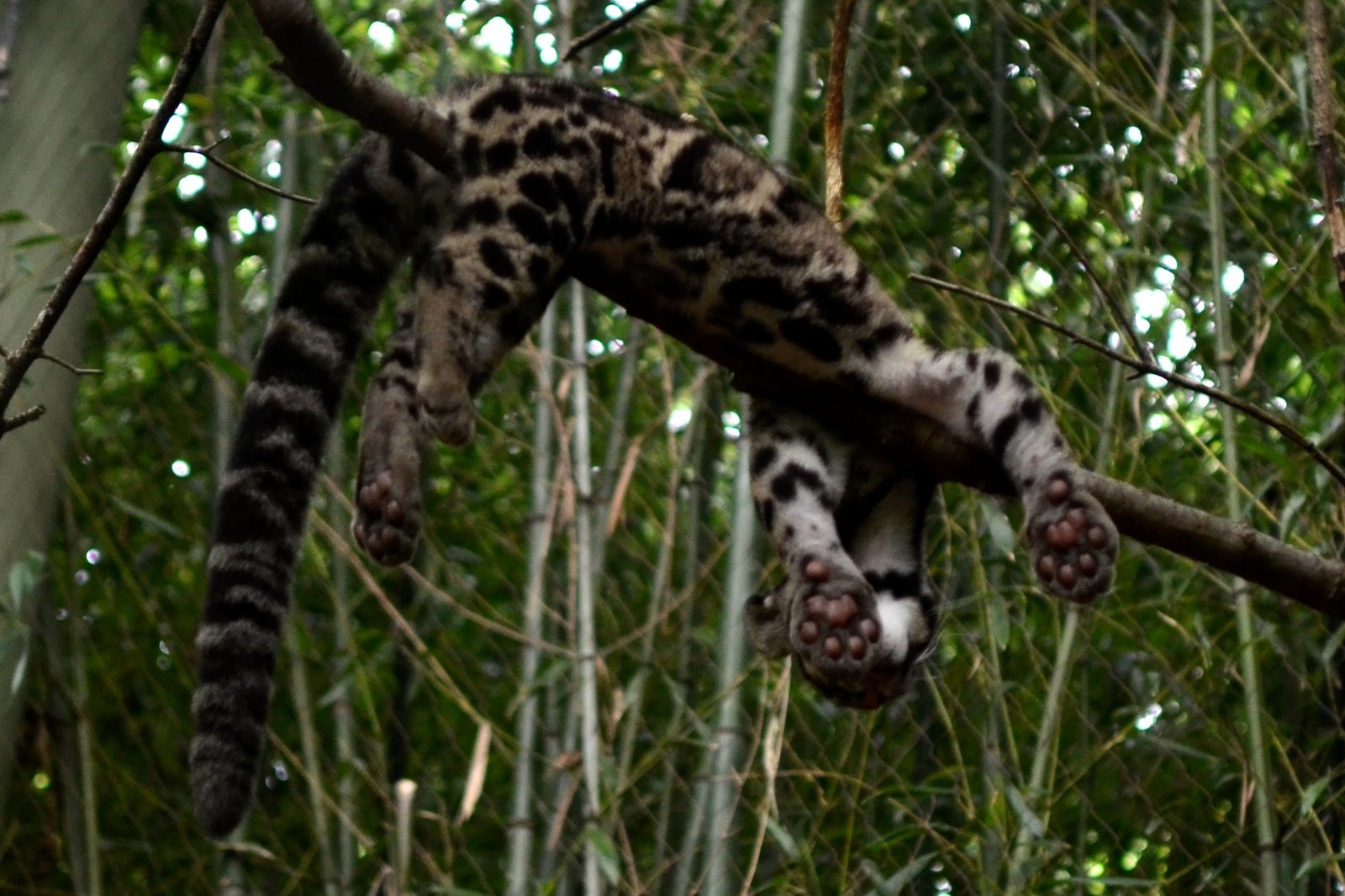
Clouded leopards are sometimes called “the smallest big cat” or “the biggest small cat.” They don’t quite fit in any box. Their teeth are as long as a tiger’s, but their bodies are compact and nimble. They have the strength to drag prey up trees, but the gentleness to care for tiny cubs. In every way, they defy easy labels. The sanctuary celebrates their uniqueness, showing visitors that nature doesn’t play by human rules. Every clouded leopard is its own puzzle, a reminder that diversity is the heart of the wild.
Tree-Dwellers at Heart
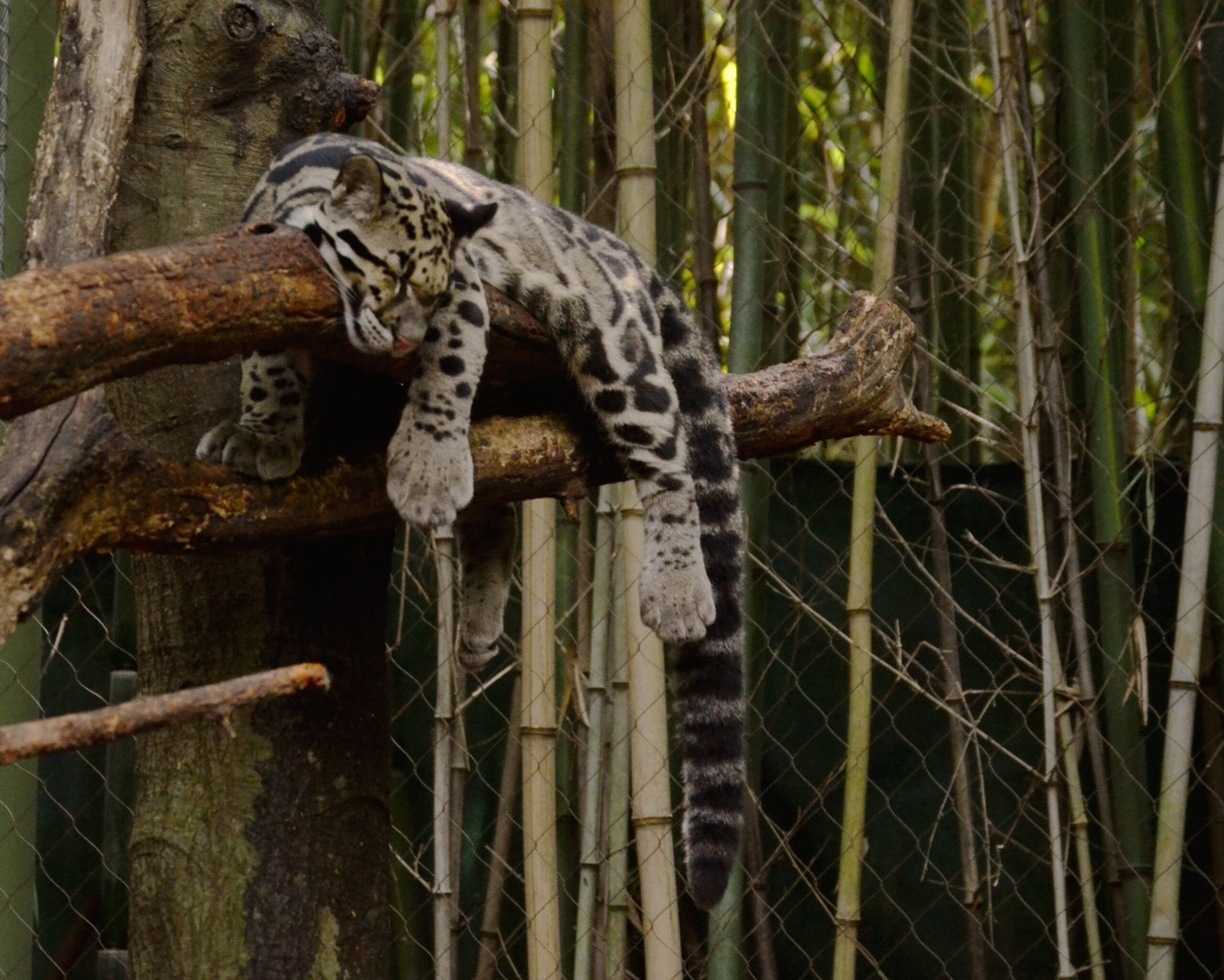
Few cats are as comfortable in the trees as the clouded leopard. Their double-jointed ankles and powerful limbs let them move up, down, and even hang by their back feet. In the sanctuary, you might see one lounging high above the ground, tail dangling, eyes half-closed in the afternoon sun. Their tree-dwelling ways keep them safe from bigger predators and close to their favorite prey. Watching them, you sense a kind of freedom most of us only dream of—the ability to rise above the chaos and find peace among the leaves.
Conservation Through Connection

The sanctuary’s real magic lies in the connections it creates—not just between leopards, but between people and the wild world. Every visitor who sees a clouded leopard up close leaves changed, carrying a spark of wonder home with them. Education is as vital as protection; when people care, they act. The sanctuary runs programs for local children and international guests alike, teaching respect for all living things. These efforts remind us that saving a species isn’t just about fences and forests, but about hearts and minds, too.
Legends and Lore
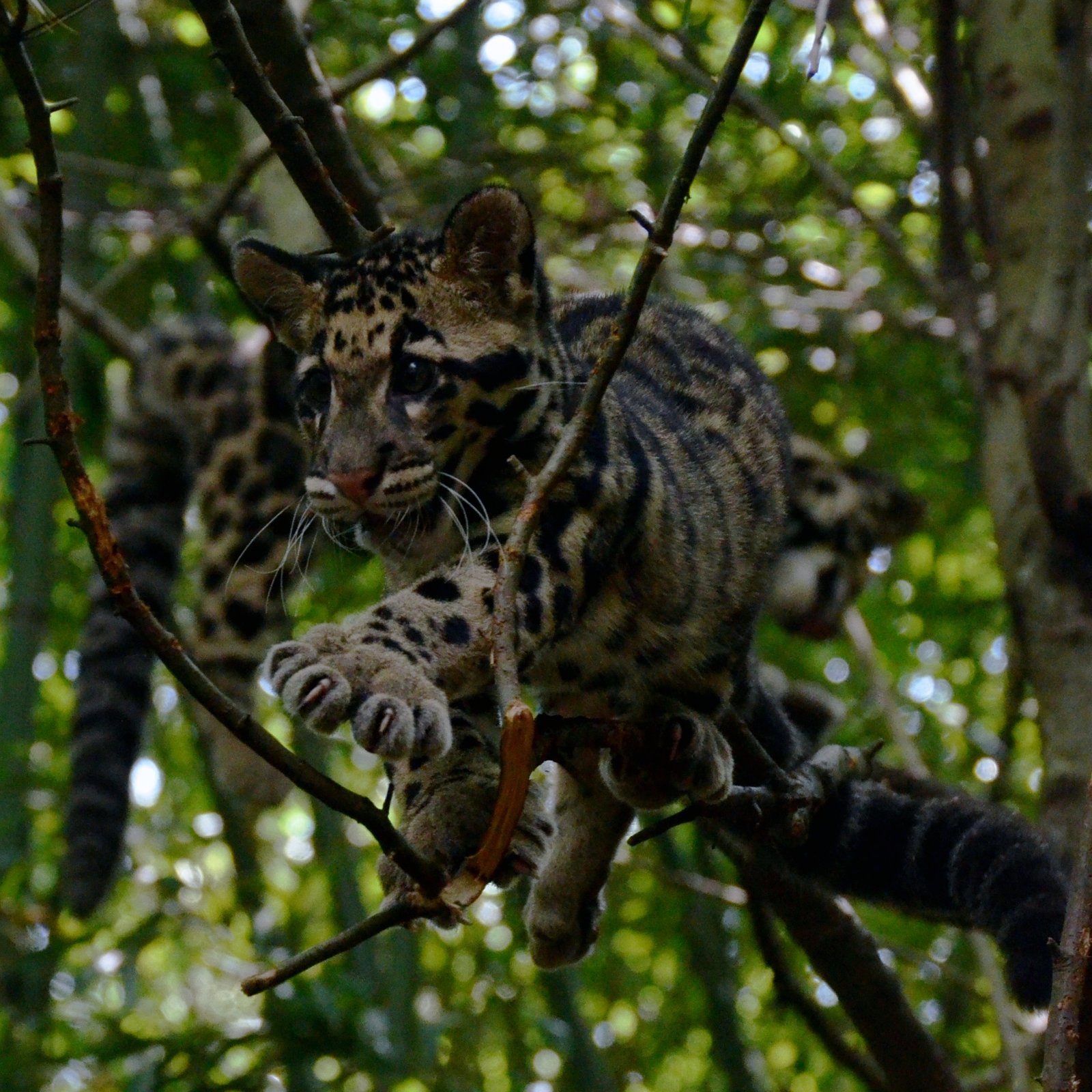
In many cultures, clouded leopards are woven into myth and legend. Some believe they bring rain, others say they guide lost souls through the forest. In the sanctuary, you see how these stories still echo—each cat a living symbol of mystery and resilience. The caretakers sometimes share tales of leopards outsmarting hunters, or disappearing before anyone can blink. These legends aren’t just entertainment; they remind us that wildness has always inspired awe and respect. Even today, these cats carry a little magic wherever they go.
The Power of Stillness
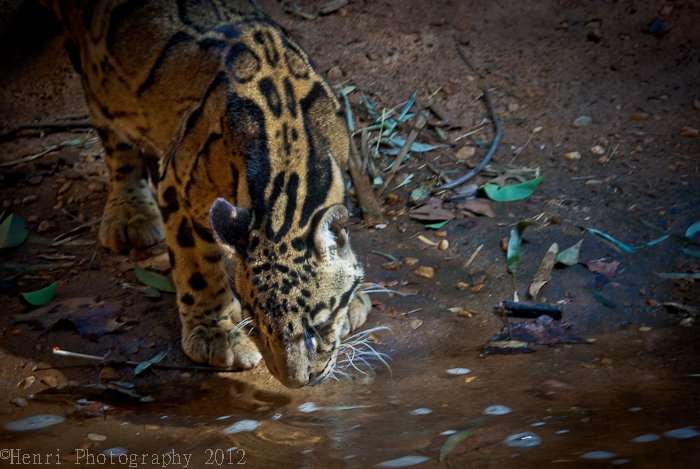
There’s a lesson in the way clouded leopards move through their world—quiet, patient, never in a rush. In our busy lives, it’s easy to forget the value of stillness. Watching a leopard pause, ears flicking, eyes soft and alert, you’re reminded that sometimes the most important thing you can do is simply be present. In the sanctuary, caretakers often sit quietly nearby, letting the cats come and go on their own terms. It’s a practice of respect and humility, one we could all stand to learn from these gentle shadows.
Hope for the Future
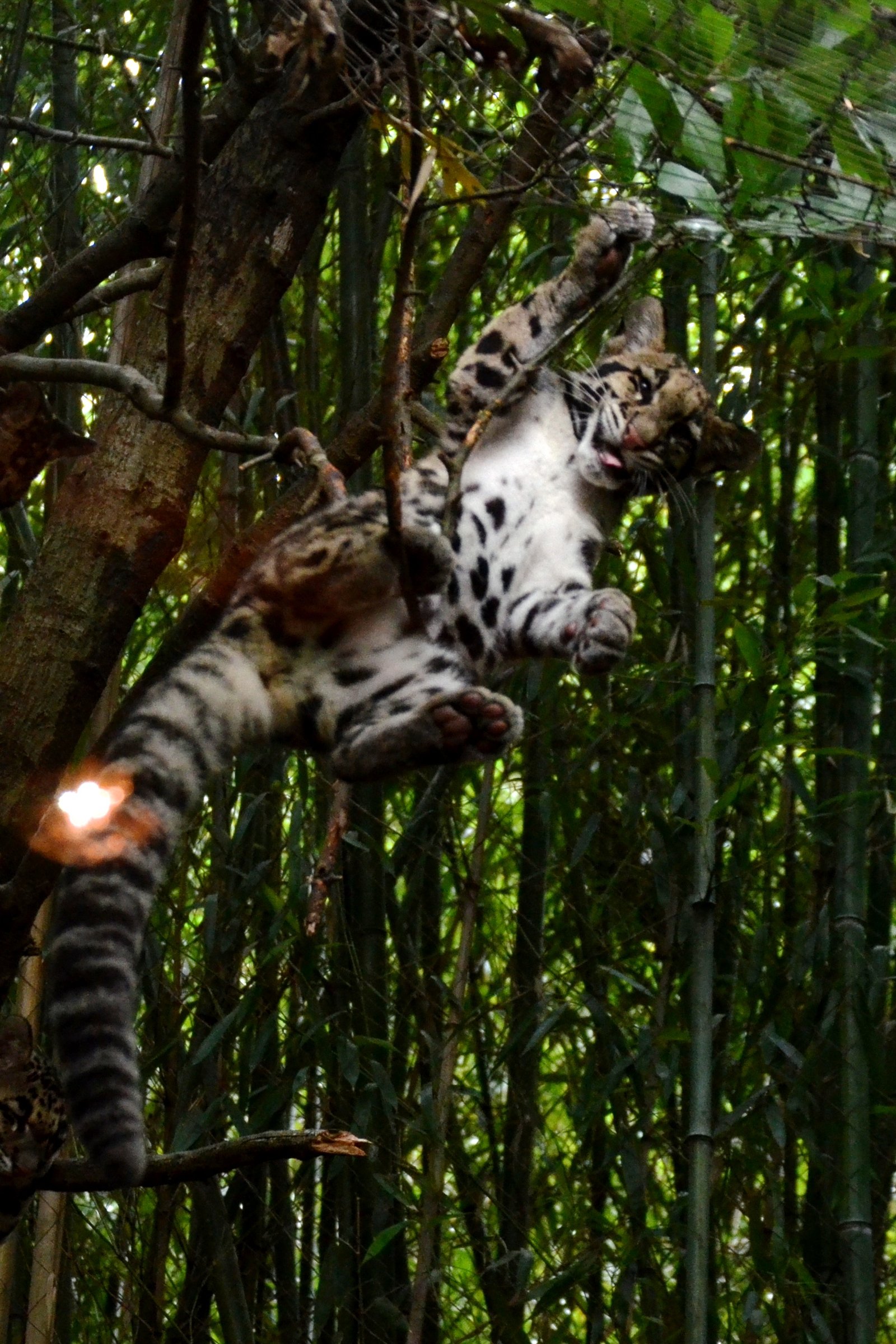
Every clouded leopard in the sanctuary is a story of survival. Some were rescued from poachers, others from forests that no longer exist. Their continued presence is a testament to the dedication of those who refuse to let them disappear. Conservation isn’t easy—it’s full of setbacks and heartbreak. But each new cub, each healthy cat, is a reason to hope. The world is a better place with these cats in it, and their survival is a promise that wildness can endure if we care enough to fight for it.
Conclusion
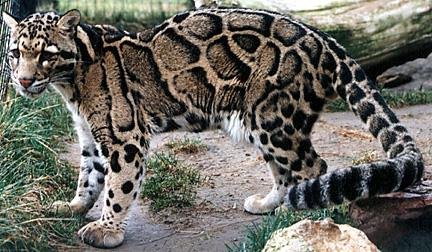
Clouded leopards remind us that the world is still full of wonder and secrets. Their lives, lived mostly in silence and shadow, are a testament to nature’s resilience and artistry. Sanctuaries offer a rare window into their mysterious world, letting us witness moments of joy, tenderness, and raw beauty. As we reflect on these photos and stories, it’s hard not to feel both humbled and inspired. These cats are more than just survivors—they are living proof that every creature has a place in the tapestry of life. What else might we discover if we choose to look a little deeper, and listen a little longer?

Suhail Ahmed is a passionate digital professional and nature enthusiast with over 8 years of experience in content strategy, SEO, web development, and digital operations. Alongside his freelance journey, Suhail actively contributes to nature and wildlife platforms like Feline Fam, where he channels his curiosity for the Feline into engaging, educational storytelling.
With a strong background in managing digital ecosystems — from ecommerce stores and WordPress websites to social media and automation — Suhail merges technical precision with creative insight. His content reflects a rare balance: SEO-friendly yet deeply human, data-informed yet emotionally resonant.
Driven by a love for discovery and storytelling, Suhail believes in using digital platforms to amplify causes that matter — especially those protecting Earth’s biodiversity and inspiring sustainable living. Whether he’s managing online projects or crafting wildlife content, his goal remains the same: to inform, inspire, and leave a positive digital footprint.

